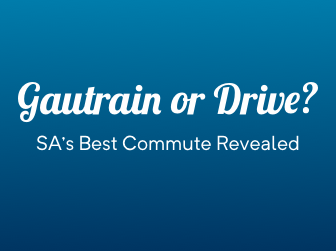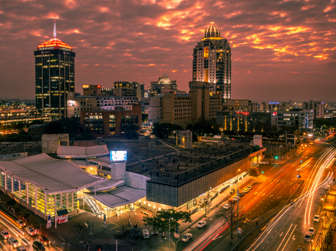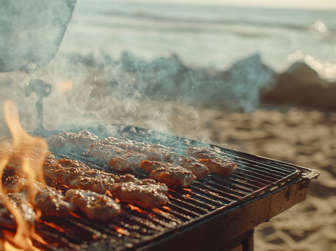So now that we’re in Level 2, you’ve decided to head to Durban for a much-deserved break – the question is, do you drive or fly? First, decide whether you’d be more comfortable flying or taking a road trip. Then, weigh up the costs associated with each option.
When it comes to driving costs, there has been a marginal increase in petrol this September. Petrol price is now at R15.16 and a drop in diesel to R13.27 (inland).
Now for the bad news. The toll fees went up by R 9.00 this March, bringing the total N3 toll fees between Johannesburg and Durban to R 263.50 for class 1 light vehicles (one way).
New toll fees per toll gate: De Hoek toll - R 51.00 (class 1 vehicles), R 80.00 (class 2 vehicles) Wilge - R71.00 (class 1), R 122.00 (class 2). Tugela – R 76.00 (class 1), R 125.00 (class 2). Mooi – R 53.00 (class 1), R 130.00 (class 2). Marianhill – R 12.50 (class 1), R 23.00 (class 2).

Why not leave a bit earlier and take a road trip along the more scenic route? You can skip both the Tugela Plaza toll gate and the Mooi River Plaza tollgate (and save yourself R124 in toll fees!). If you choose to skip Tugela Plaza toll gate (and Van Reenans Pass), you can go through Harrismith town, catch the N5, then the R74 and back on the N3. It’ll take you 15 to 30 minutes longer (15 km), but you’ll get to pass Sterkfontein Dam and if you have time, you can visit the Sterkfontein Dam Nature Reserve.
You can also skip Mooi River Toll Plaza on the Exit 168 toward Estcourt on the N6, right on the R103 driving through Mooi River town then get back on the N3 via Nottingham Road. It’s 17km longer than if you go via the N3 but the scenery is far more breathtaking. If you continue on the R103, you can go through the Midlands Meander, famous for its tranquil surrounds and treasure box of tourist attractions.

If you’re considering flying between Joburg and Durban for the Heritage Day long weekend (you’ll have to take the Friday off), flights range from R1300 to almost R2000 per person.

If you’re in your own car with your family or close friends, you probably won’t have to wear a mask. However, if you’re travelling in a taxi or a larger vehicle with a group of people, it would be safer to wear a face covering. You would also need to take the necessary precautions when stopping at petrol stations, such as wearing a mask, social distancing and using hand sanitizer.
If you’re doing a road trip, consider packing some old-school pad kos so you can eat at a picnic spot, outside in the fresh air and away from “high-risk” areas such as a busy restaurant along the route.
Most South African airlines have put measures in place to protect passengers. All passengers and crew are always required to wear a face covering and there is limited contact between crew and passengers. Mango airlines require passengers to fill out a health questionnaire.
Passengers are encouraged to prepare for their journeys at home, with online booking and self-checking, to minimise interaction in the airport. Allow extra time for all the additional checks and possible delays.
Sitting squeezed between a number of strangers on board an aircraft might feel like a risky position during these uncertain times, but a recent study shows that the risk of catching COVID-19 on a short flight is actually lower than you think.
Whether you choose to travel via road or air, if you have any COVID-19 symptoms and you suspect that you might have Coronavirus, do the kindest thing for your fellow countrymen, your family and friends, and rather stay home. Let’s keep South Africa safe!

You’ve probably been driving your car a lot less than usual over the last few months, so before you head out for the open road, make sure your vehicle is travel ready. We’ve rounded up these quick tips for you:
- Book the car in for a service at least a week in advance so you have time to get anything which may be wrong repaired or replaced. Getting a car service can take away some of the worries of the open road. Make sure you’ve packed your complete breakdown kit, including extra water, just in case. (Keep up to date with your car’s services with an easy-to-budget-for service plan through MotorHappy!)
- Check for tyre pressure, wear and tread depth. Replace or realign if needed. Make sure your spare tyre is in good condition, too.
- Replace your wiper blades if necessary.
- Plan your route. Driving long distances can be tiring, so make sure you schedule rest stops, even if you need to include overnight stays. Overnight stays can add an extra dimension to your vacation so it’s good to look at places that have amenities the whole family can use.
- Long journeys can easily become boring, especially when you’ve got little ones onboard. Pack some travel games and books that are easily accessible, but also play games that involve everyone in the car. Music playlists can be alternated so they suit everyone of all ages, and they’re great for a family sing along.
Car trackers: How they work and why they’re important
Used car shopping? Includes Extended Warranty, and other tips


